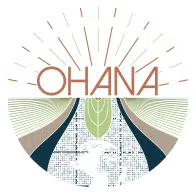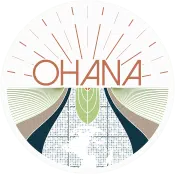
 About the author:
About the author:
Pascale Moreau is an expert public affairs consultant who leads Ohana’s strategy and high level projects. As the founder of Ohana Public Affairs and with a background in textiles, healthcare and ICT, she has been working alongside Europe’s most forward-thinking organisations to guide and consolidate their green transitions for over 15 years.
Get to know Pascale and Ohana’s complete team of expert consultants.
EU Policy for Non-EU Players: Understanding the Impacts of EU Textile Policies on Global Suppliers
As the European Union intensifies its focus on implementing sustainability policies, the new rules for textiles begin to send ripples beyond its borders, causing major concern among non-EU suppliers. In this article, I will take you through the challenges and opportunities these policies present for global players in the textile industry, and explain the urgent need for collaboration between EU and non-EU stakeholders. This piece is a must-read for anyone interested in understanding how EU policies are reshaping the global textile sector and paving the way for a more sustainable future.
Want someone with deep experience and connections in the EU to help guide your sustainability strategy? Get in touch!
The Context
2023 marked a clear shift within the EU sustainability landscape, from the policy development stage to active implementation. Industry (EU and non-EU) is calling for harmonised implementation and rigorous enforcement of the regulatory framework. Without a clear EU harmonised and coherent framework, competent authorities, business and services providers supporting the implementation in day to day tasks will not be able to agree on a common approach.
However, so far, both the industry and policymakers have been focusing on EU retailers and manufacturers, as they are the ones directly under the scope of EU legislation, with non-EU actors being left completely out of the loop. One of the key points of concern is that their EU business partners could all interpret the law differently, resulting in a lack of harmonisation and a completely different set of standards demanded by each company.
While non-EU players are aware that European legislative changes will soon impact them on some level, the specifics remain a blur – what exactly will be expected of them, and which practical steps should they be taking to prepare?
In essence, it’s like being in a race against time to meet requirements which haven’t yet been clearly defined.
Current Obstacles for Non-EU Players
Although there is still a lot we don’t know, the high levels of uncertainty faced by non-EU suppliers stems from three clear issues:
- Limited Access to Information – Non-EU textile suppliers often find themselves on the outskirts of the EU policy-making process, struggling to access clear information and updates on legislative developments. Despite the efforts of organisations like The Policy Hub, SAC, and the Transformers Foundation, a significant gap in knowledge and understanding persists.
- Uncertainty Among EU Partners – Many EU businesses are themselves still trying to decipher the complexities of the new legislation and how to apply it, which in turn affects their ability to inform their non-EU supply chain about what needs to change. The multiplication of service providers claiming that by using their tools or labels you are compliant adds another layer of complexity and confusion to the mix – where businesses (both EU and non EU) can’t be sure if these providers can, in fact, secure compliance afterall.
- Unfinalised Legislation – The final requirements are not clear, as the legislative process for the upcoming textile policies is still in motion, and a number of crucial guidelines and delegated acts detailing the specific requirements are yet to be published.
EU’s Vision for the Future of the Textile Sector
The European Union envisions a transformative future for its textile sector by 2030, emphasising sustainability, circularity, and responsibility. The goal is for textiles in the EU market to be long-lasting, recyclable, predominantly made from recycled fibres, and free from hazardous substances, all while respecting social rights and environmental standards.
The focus will shift away from fast fashion, promoting high-quality, affordable textiles with extensive reuse and repair services. The sector as a whole will be competitive, resilient, and innovative, with producers being accountable for their products throughout their lifecycle, including post-consumption waste management.
Internationally, the EU is committed to leading global efforts towards sustainable and circular textiles, engaging in various international forums and partnerships, and supporting initiatives like UNEP’s InTex project to encourage sustainable practices in the global textile value chain.
The Importance of Collaborating with Non-EU Suppliers
The success of the EU’s sustainability goals for all sectors of the economy is inextricably linked to the active participation of non-EU suppliers, and I believe that is especially true for the textile industry.
The international dimension of the textile supply chain makes it unrealistic to expect to consolidate the sector’s green transition without establishing a framework for close collaboration with third-party governments and businesses. In reality, non-EU players will be the ones implementing the bulk of the requirements outlined in the EU Textile Strategy.
To realise the 2030 vision I have detailed above, it is crucial and urgent that we extend our efforts beyond EU borders through a joint action plan. This means ensuring that all global players are aware of the impending changes and establishing a robust support system to facilitate their implementation.
Impacts of EU Textile Policies on the Global Supply Chain
The EU Textile Strategy will have far-reaching consequences, as it establishes a new licence to operate for both retailers, brands and suppliers: if you don’t comply, you cannot sell on the EU market or supply to companies who do.
To comply with this legislation, international players will need to adapt their practices to match elevated social and environmental standards. This includes making changes on several fronts such as sourcing, manufacturing, data collection and even in the design philosophy of textile products. At the same time, their European counterparts will also only be considered compliant if they can ensure that their entire value chain is within the norms.
In addition to the challenge of implementing such changes, there is the issue of doing so in a timely manner. By the time a product is placed on the EU market, all the processes must be compliance-proofed. Considering that the process of developing and manufacturing a new product can take up to five years, the adjustments required across the textile supply chain need to happen way ahead of the official EU compliance deadline.
Recommendations for EU Stakeholders to Ensure Collective Success
To achieve the sustainability overhaul we have planned for the textile sector we will need all hands on deck. The full ecosystem – business partners, policymakers and service providers – must come together now to work on a clear implementation strategy.
Having the final legislation ready is not the end of the transformation process, but the beginning.
Now that we know what the playing field looks like and have a good notion about the game’s rules, we need to ensure that teams and referees have a common understanding of these rules and define standards to communicate them across the board.
The Role of the EU Commission and Institutions
As I see it, the Commission’s role is to act as stated in the textile strategy and support the textile green transition beyond the block’s borders. We need to understand the concrete impacts of the legislation on the entire value chain to define concrete and realistic guidelines within a timeframe that allows all actors to comply.
EU delegations should be visiting production countries to explain the legislation so that local governments and actors can assess the practical consequences for their industries and businesses. Member States are encouraged to drive and support the ongoing debate through their development agencies.
The Role of Non-EU Governments
In addition to engaging with EU policymakers to help shape the scope of upcoming legislation, local governments should develop investment and legislative frameworks to support the transition in their own countries.
The Role of EU Businesses
European businesses should engage their public affairs and ESG teams and get ready to participate in a collaborative effort to carry out the transition. This includes engaging in open communication with (EU and non-EU) suppliers, providing clear and actionable guidelines, and offering support in understanding and implementing the required changes.
This support could manifest in various forms, such as training programmes, sharing best practices, and offering financial assistance or incentives to help key suppliers transition to more sustainable methods. Additionally, creating international industry platforms to facilitate dialogue can help bridge the knowledge gap and build a new community environment around sustainable textile production.
What Non-EU Textile Suppliers Can Do to Prepare
For non-EU suppliers, proactivity is the key to navigating the uncertainties around the EU’s new textile landscape. These players should actively seek out information and make the most of resources such as the Transformers Foundation’s Apparel Supplier’s Guide, which offers clear explanations about sustainability legislation from the EU, US, and UK.
They should also look to engage with other stakeholders, as building partnerships with EU businesses and institutions can provide valuable insights and support. Finally, suppliers must start aligning their operations with the anticipated requirements, and consider investing in research and development to innovate in sustainable practices, as well as in training their workforce on new technologies.
The EU’s textile policies are setting a new global standard for sustainability in the industry, and while this presents significant challenges for both EU and non-EU businesses, it’s also an opportunity to be part of a substantial shift towards a more sustainable future. Collaboration, proactive engagement, and open communication will be essential for all stakeholders to successfully navigate changes and ensure the collective achievement of these ambitious goals. The journey ahead is complex, but I believe that with shared commitment and cooperation, a sustainable and prosperous future is within reach for the textile industry.
Want someone with deep experience and connections in the EU to help guide your sustainability strategy? Get in touch!
Join our newsletter to keep up to date with the latest news and information coming out of the EU.


